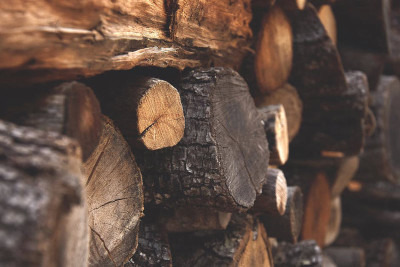The Different Woodworking Options for Exotic Wood
15th Jun 2022

Woodworkers have enjoyed the unique qualities of exotic wood for centuries. Furniture makers in England have been working with exotics since the 18th century.
It's no wonder. Exotic woods come in various colors and hardness from all over the world. This makes them perfect for many uses, from the kitchen to the living room.
Exotic woods are any species of wood from outside North America. Typically, from tropical areas such as Africa, South America, Asia, and Australia. They have a wide variety of colors, from light to black, and are harder than domestic wood species.
Popular exotics include Honduran Mahogany, Jarrah, Bamboo, Ebony, Katalox, Burmese Blackwood, and Purple Heart.
But which wood species to choose for which purpose?
Read on to learn about the characteristics of exotic woods and the woodworking options to be aware of.
Seven Exotic Woods
Honduras Mahogany is very strong, stiff, and lightweight, which boat builders often use.
Jarrah comes from Australia and is great for ornate projects with its curls and curved edges. It has a rich color with cross grains.
Ebony has a fine silky finish and is famous for its rich, dark black color. It is prized for its hardness, stability, and weight.
Katalox has a lighter color than Ebony, with hints of purple throughout. It has a straight grain and is strong and stiff.
Chakte Viga is a lighter-colored wood with bright orange and red combination. Its acoustic qualities make it a good choice for guitar tone boards.
Cocobolo is a dark wood with a textured grain. It is an excellent option for areas of high humidity and where liquids are common, such as kitchens and bathrooms.
Purple Heart is a very hard and dense wood from Central and South America. It is an excellent choice for flooring and furniture in high-traffic areas.
Choose the Right Exotic Wood
When choosing the exotic wood blanks or burl wood you want to buy and use, consider where you will use the wood, your budget, and your woodworking knowledge.
Build your knowledge and skills of exotic wood types by starting with small-scale pieces. Once you become familiar with the characteristics of the woods, you can comfortably move up to larger, more complex projects.
Tropical woods can be very dense and oily, which causes a problem with water-based adhesives. To resolve this, scuff the edges to be glued with rough grit sandpaper and wipe the surface with a rag and solvent.
Some exotics can be very hard, making it difficult to use certain hand tools. If using a hand planer, setting the blade to a high angle, like 60 degrees, will help. You will also need to sharpen your blades more often as the exotic wood will dull them quickly.
Find the Right Supplier
Working with exotic wood can be challenging, but the results are beautiful and eye-catching. It's the perfect wood for any room in the home.
When looking at exotic wood for sale, choose a supplier who acquires their wood from sustainable sources, like Global Wood Source. Check out their full range of woods from their exotic wood wholesale warehouse.
Global Wood Source is a family-owned and operated lumber yard and mill specializing in exotic woods from around the world and rare domestics. We personally acquire and inspect each piece of log and timber obtained from forests and jungles worldwide.

